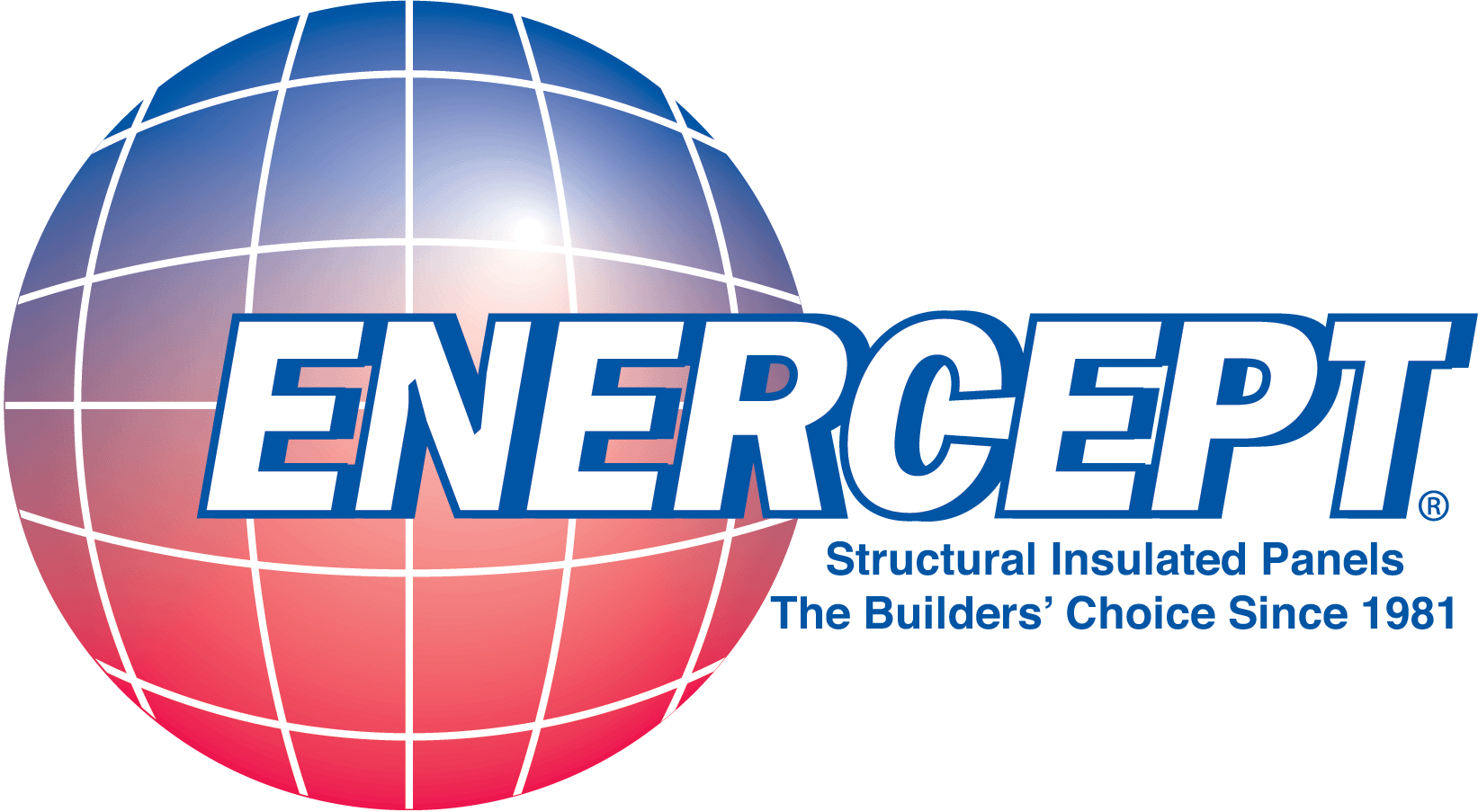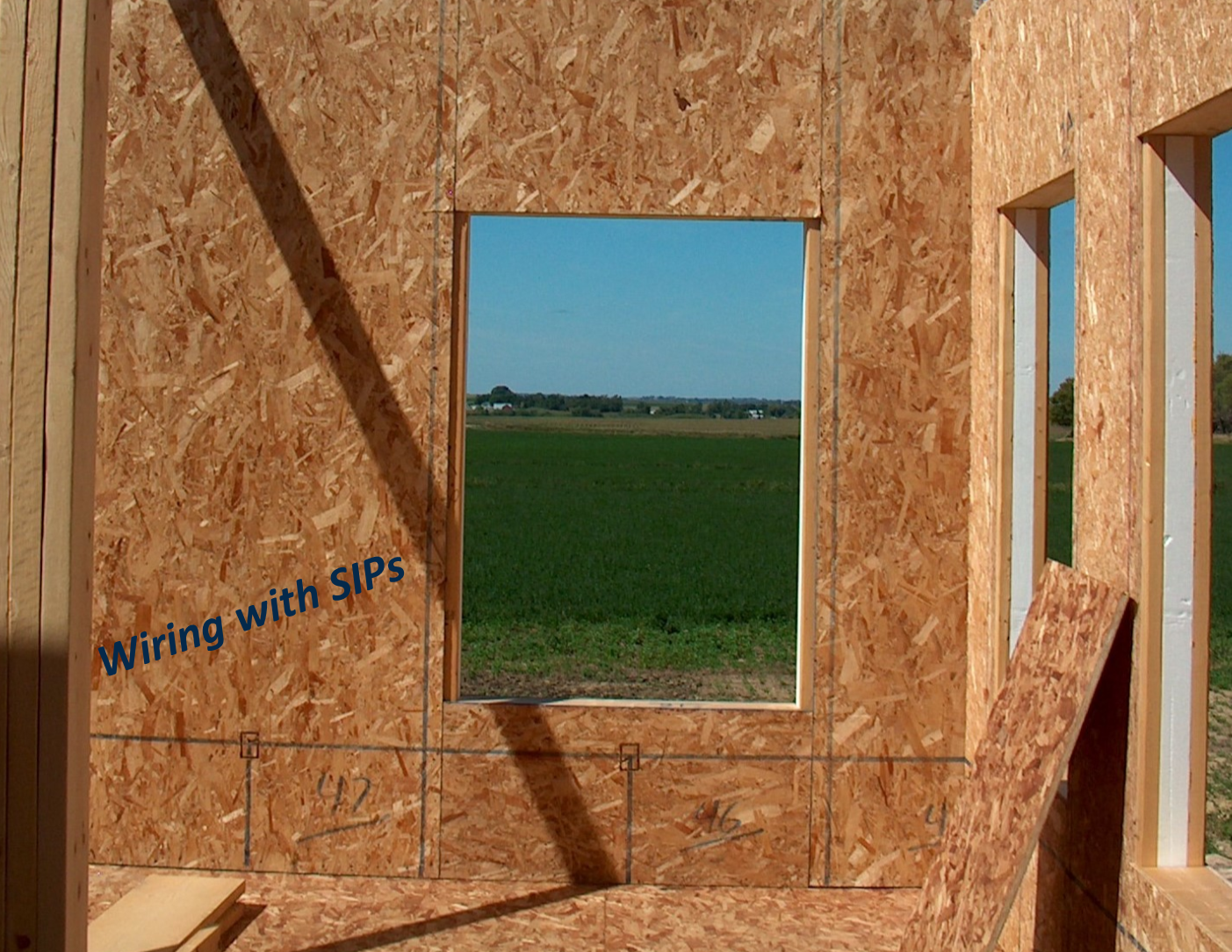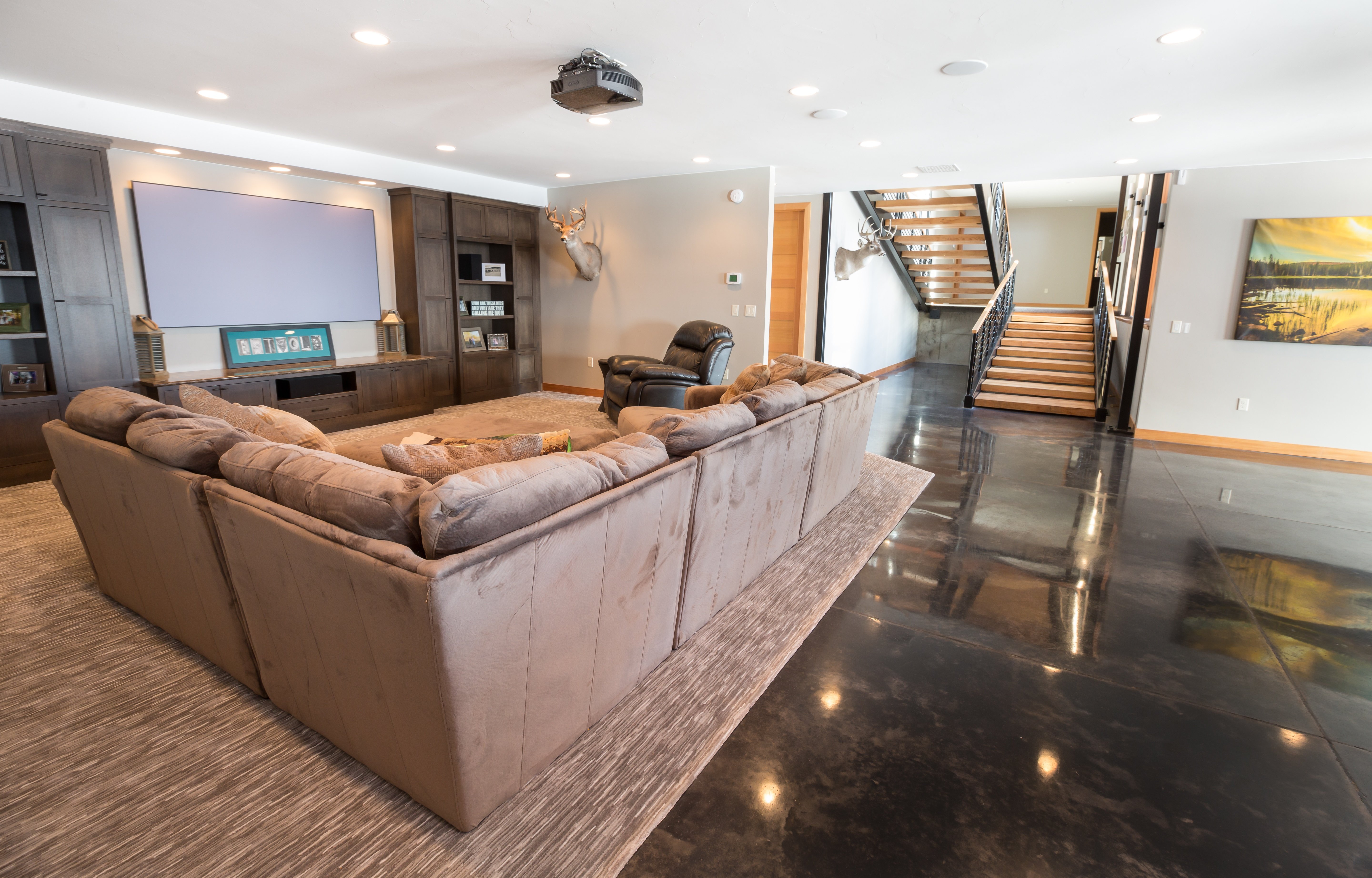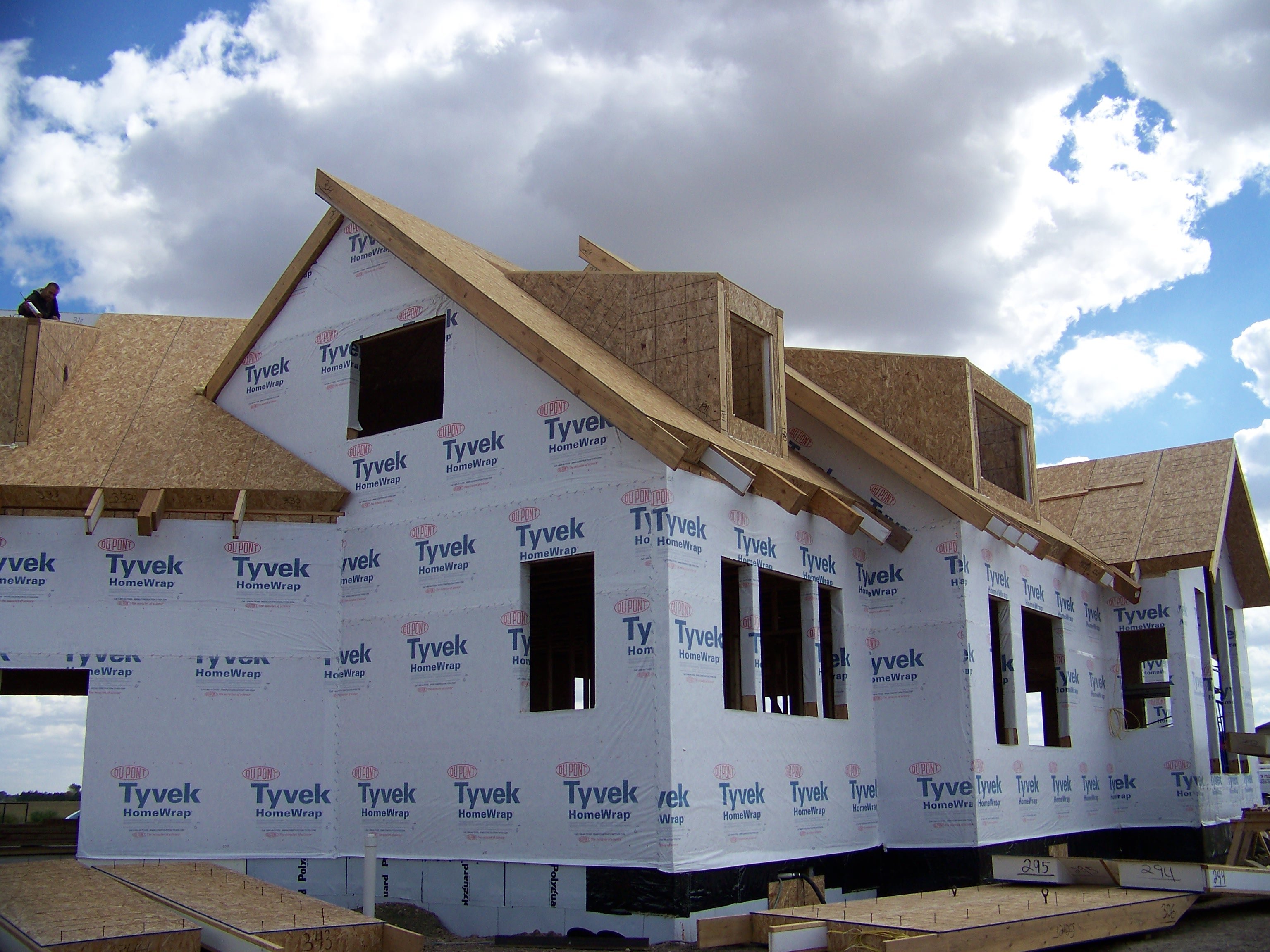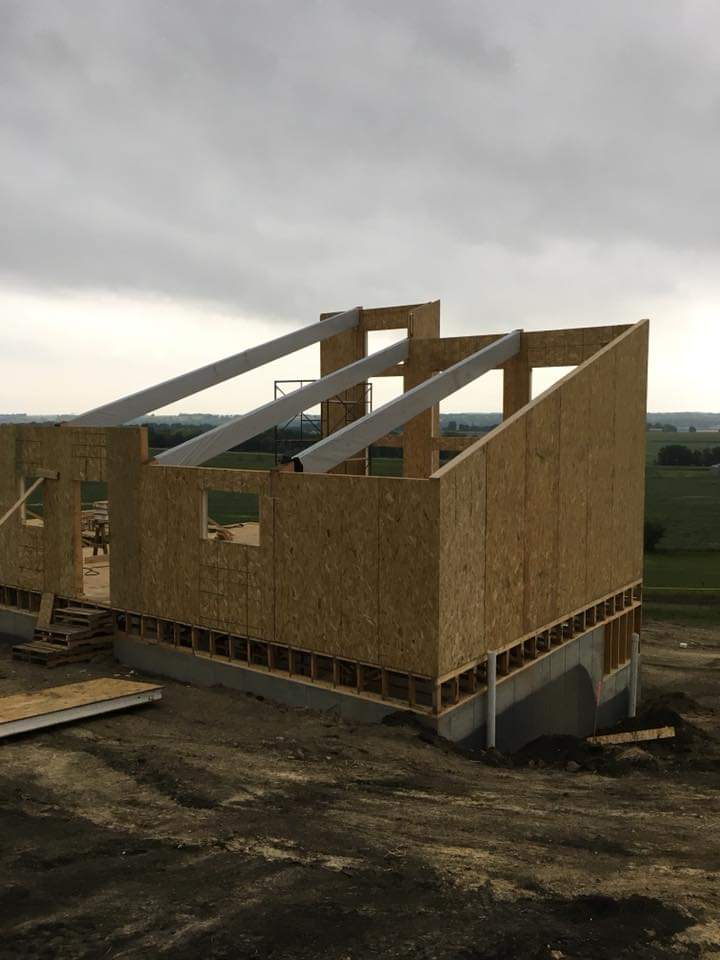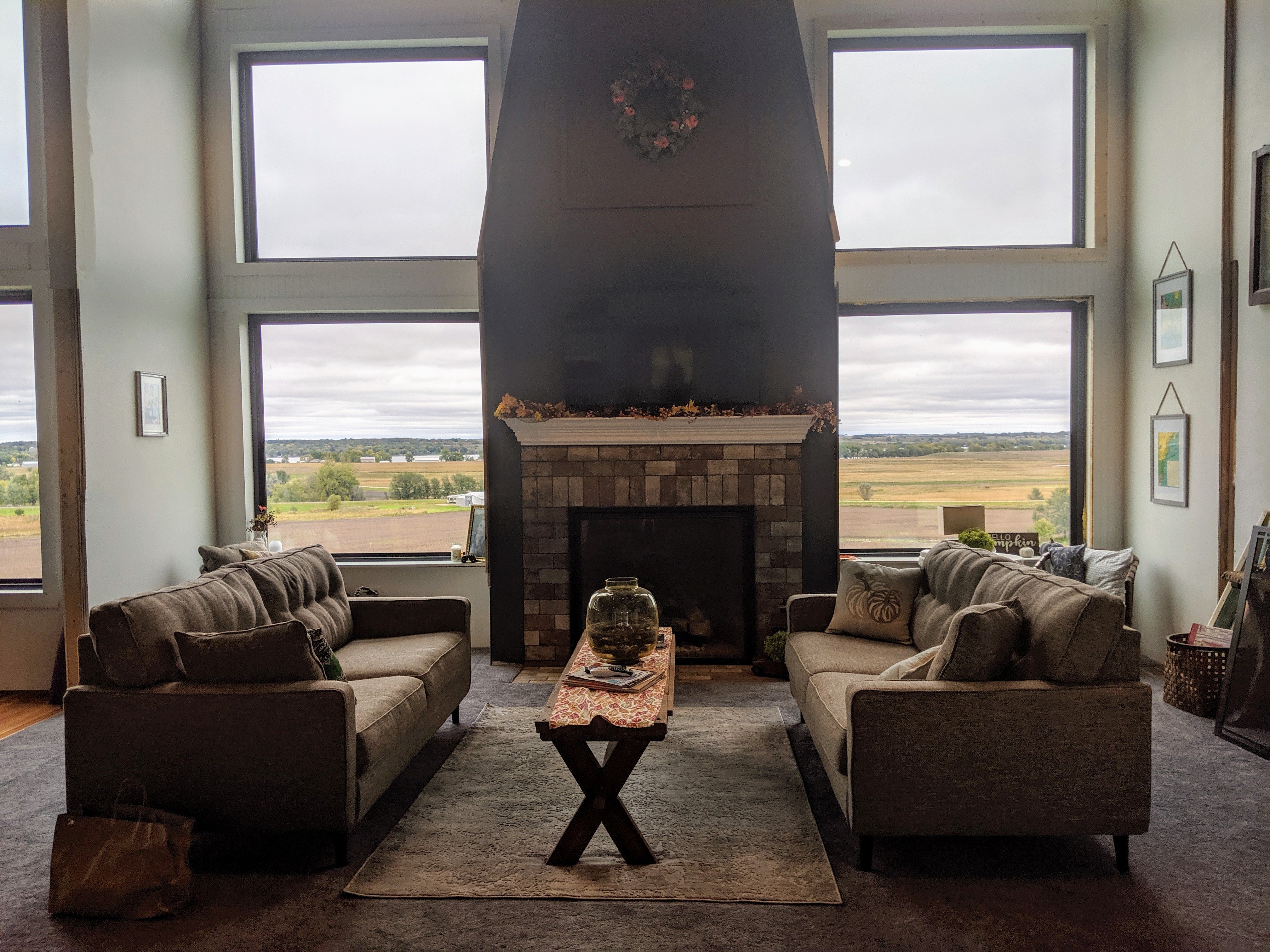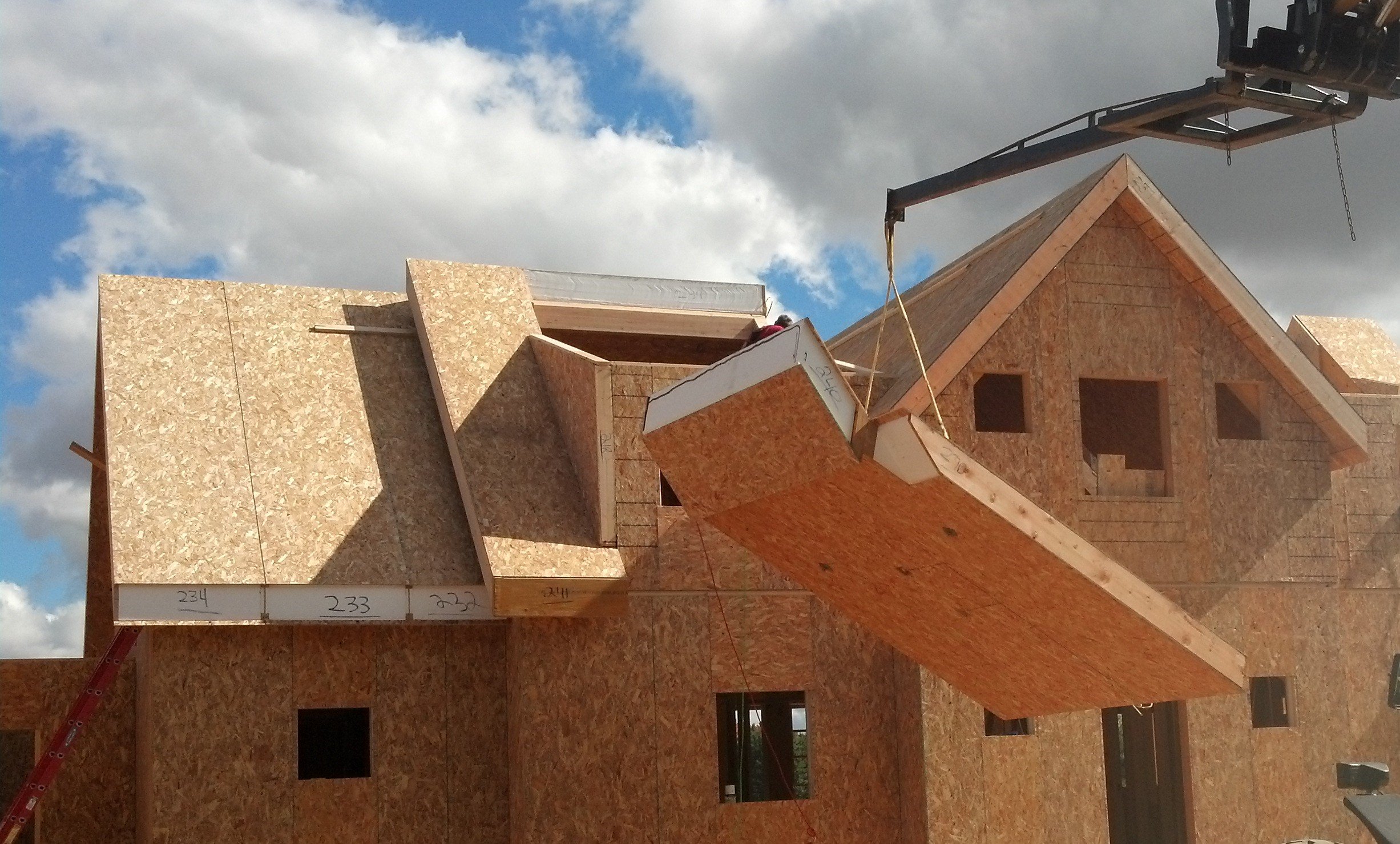Protecting your building envelope
Air leakage can impact your building's durability. Wet wooden sheathing can rot and break down, diminishing your structure's strength.
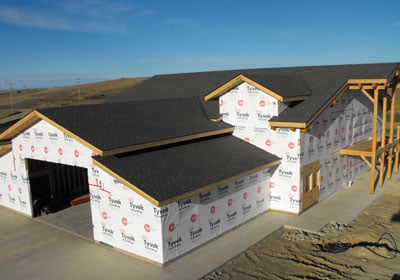
Managing moisture with house wrap
As humans, we rely on water to survive, but for buildings, it can contribute to the early deterioration of the exterior shell. When moist air hits a cooler surface, water vapor in the air can condense, collect, and be absorbed in your SIP wall assembly. It is important to minimize the risk of damage by effectively managing the flow of air into and out of the building.
With the oriented strand board (OSB) sheathing of SIP panels, an added weather-resistant barrier or house wrap is needed to reduce unwanted moisture intrusion. Properly installed house wrap can help prevent water from reaching the wall surface and breathes to help trapped moisture escape.
Permeability
Water can get to your exterior sheathing in a number of ways. One of the key areas of concern is improper flashing. Bad flashing at rough openings such as windows and doors are places where water typically finds its way into a structure.
The answer is a balance. You don't want your house wrap to be too vapor open so the inward vapor drive is slowed, but not too vapor closed, so the the wall can still dry out.
Other variables in the equation include your climate and the type of cladding used, so you will want to check with the manufacturer for recommendations.
Air leakage
Reducing air infiltration with a continuous air barrier (like SIP construction) can reduce energy consumption by 40%-60%. This may also increase the value of commercial buildings by reducing operating costs.
An increasing number of homeowners and organizations concerned about reducing their carbon footprint are working to achieve that elusive goal of Net Zero Building Design. Minimizing air leakage and careful design of the building envelope is critically important for achieving net-zero energy consumption.
Air leakage is a major cause of moisture intrusion. The tight nature of SIPs minimizes air leakage and reduces moisture extrusion and intrusion through the walls and roof. The result is a healthier home and better indoor air quality.
SIP walls are tight without house wrap, but they need a drainage plane material. Enercept recommends and uses Tyvek Home Wrap.
.jpg?width=300&name=8-29-12%20(2).jpg)
Additionally, because SIPs are tight, it is crucial that you install a mechanical ventilation system (air-exchanger). This equipment will maintain your indoor air quality and protect your SIP system from inside humidity.
Learn more:
